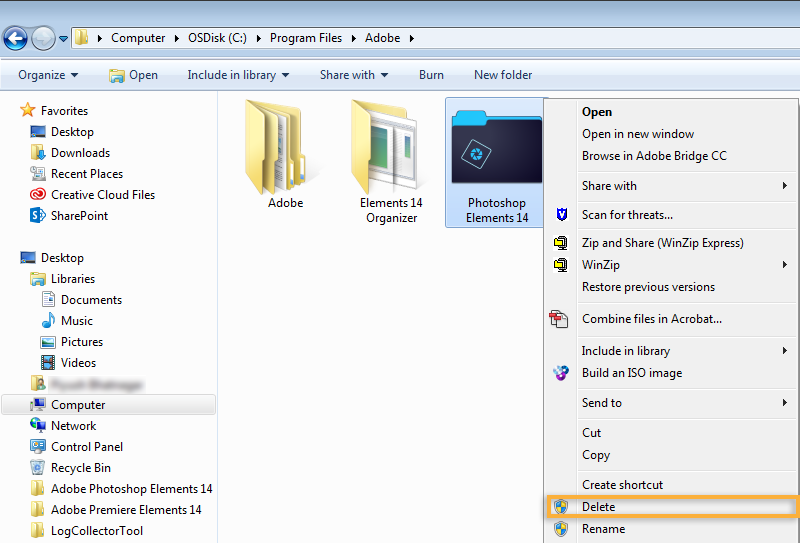How To Install C Language Software In Windows 7

Clean Install Windows 7 - Windows 7 Help Forums. Boot the computer from your Windows 7 installation DVD/USB. NOTE: Make sure that the CD/DVD drive is selected first and your HDD second in the boot priority order in your BIOS settings.
Usually it is by default. If using a DVD, then when prompted, press any key to boot from the installation DVD.
If you miss it, you will have to restart the computer. Set up your language preferences, and click on the Next button. Click on the Install Now button to start the installation. Check the I accept the license terms box, and click on Next. Click on the Custom (advanced) option. Select the hard drive or partition that you want to install Windows 7 on, and click on the Drive Options (advanced)link.
WARNING: You may not have the Drive options (advanced) option unless the installation is done at boot, and not running the installation from within your current OS. Select a hard drive or partition that you want to do a clean install of Windows 7 on, do what Drive options (advanced) you want if any, and click on the Next button when finished. Afterwards, your RAID drives will be available to select from to install Windows 7 on. Type in how much in MB (1 GB = 1. MB) that you want to shrink it by. Now select the new extended partition.
Install WhatsApp on Windows 7, Computer, PC or laptop and start group chat. Run WhatsApp for WIndows 7 (also for Win XP and Vista OS PC) with BlueStacks.
- In this article you will learn how to install a printer on Windows Server 2012.
- Includes info about how to get the download, requirements, and more.
Next, select the unallocated drive to install Windows 7 on. If there are no partitions on the disk, you will get the 1.
MB System Reserved. If you do not want to have the 1. MB System Reserved partition and only the Windows 7 C: partition on a HDD or SSD after installation, then select a formatted partition or drive to install Windows 7 on. If there are any partitions on the disk, you won't get the 1. MB System Reserved.
The installation of Windows 7 will now begin. After the final restart, you will see this screen for a moment. Type in any user name that you want for your default administrator account and any computer name, then click on the Next button.
Type in a password you want for your default administrator account. Type it in again to confirm it, then type in a hint for your password. Click on the Next button.
The hint will be seen by all users on the computer, so do not type your password as the hint. NOTE: If you do not want your your user account password protected at this time or do not want to have to type in a hint, then leave this blank and click on the Next button. You can create a password later for your user account in the Control Panel User Accounts after installing Windows 7 without having to type in a hint. Type in your Windows 7 product keynumber. Uncheck the Automatically activate Windows when I'm online box, then click on the Next button. Click on Use recommended settings to allow automatic Windows Updates and proper security settings.
Select your time zone and set your time and date settings, then click on the Next button. Click on your computer's correct network location type location to select it and have the settings for that location automatically applied. Windows 7 will now prepare your desktop to startup. Install all of your device drivers, then Windows Updates. Refresh your Windows Experience Index (WEI) score.
When finished, all you will need to do is to activate Windows 7.
The downloads can be found here. The installer should work, and allow you to pick a version that you need. Note the Qt SDK comes with the same toolchain. So if you are developing in Qt and using the SDK, just use the toolchain it comes with. Another alternative that has up to date toolchains comes from..
Lavavej, isn't that a spot- on name for the maintainer of MSVC++ Standard Library!). You can find it here. It includes Boost. I leave the below for reference, but I strongly suggest against using Min.
GW. org, due to limitations detailed below. Download Super Bomberman 3 Para Snes Emulator. TDM- GCC (the Min. GW- w. 64 version) provides some hacks that you may find useful in your specific situation, although I recommend using vanilla GCC at all times for maximum compatibility. GCC for Windows is provided by two projects currently. They both provide a very own implementation of the Windows SDK (headers and libraries) which is necessary because GCC does not work with Visual Studio files. The older mingw. org, which @Mat already pointed you to.
They provide only a 3. See here for the downloads you need: Binutils is the linker and resource compiler etc. GCC is the compiler, and is split in core and language packages. GDB is the debugger. You might need to download mingw. For support, you can try (don't expect friendly replies) mingw- users@lists.
Alternatively, download mingw- get and use that. The newer mingw- w. ARM support. I use it and built toolchains with their CRT. Personal and auto builds are found under . They also provide Linux to Windows cross- compilers. I suggest you try a personal build first, they are more complete. Try mine (rubenvb) for GCC 4.
GCC 4. 4 and 4. 5. Both of us provide 3.
These packages include everything listed above. I currently recommend the . They may use patches that break binary compatibility with official/unpatched toolchains, so be careful using them. It's best to use the official releases.